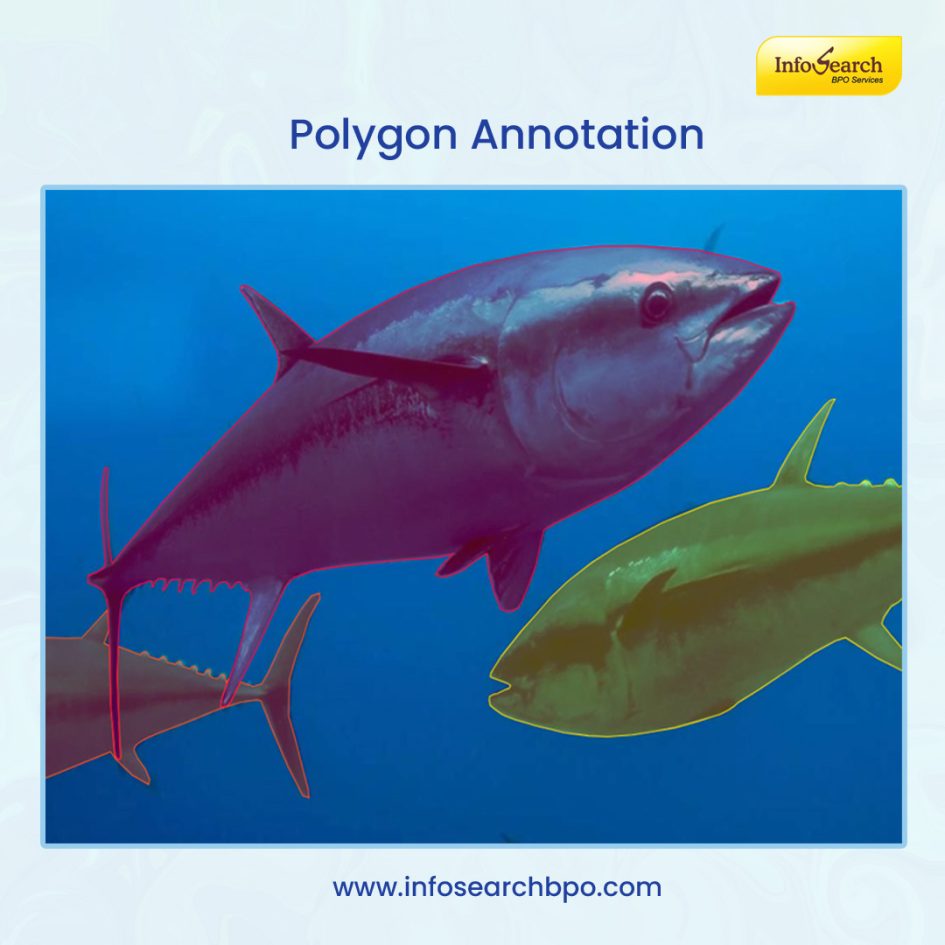Infosearch BPO provides polygon annotation services for machine learning and artificial intelligence. Polygon annotation in computer vision labels objects in images by drawing closed shapes utilizing x and y coordinates to connect the points. This technique produces greatly detailed object segmentation—particularly for those shapes that are irregular or awkward to outline—through the careful definition of their contours. Outsource polygon annotation to Infosearch for accurate annotated datasets to train your machine learning models.
Why Polygon Annotation?
Polygon annotation plays a critical role when the use of standard bounding boxes or keypoints cannot accurately perform the job. By applying polygons, you give your machine learning models a very close-up, everything-pixel view of how objects are defined.
Key Features
| Feature
Shape Data Format Tools |
Description
An irregular polygon delimitated by lined-up vertices. An array of points (x, y) that defines the full perimeter of the polygon. LabelMe, CVAT, Labelbox and VGG Image Annotator (VIA) and others. |
Best Use Cases
- Instance Segmentation
Example: Identifying all leaves on a tree or rifling through separate objects scattered among overlapping pieces.
- Medical Imaging
Example: Marking tumors, or organs that are irregular in shape.
- Autonomous Driving
Example: Proper description of road signs, lane markings, and persons in pictures.
- Agriculture
Example: Indicating the fruits, plants, or leaves, and those with irregular form.
- Aerial & Satellite Imagery
Example: Identification of buildings, roads or water masses in aerial or satellite pictures.
Polygon vs. Bounding Box vs. Keypoints
| Criteria | Bounding Box Annotation | Keypoints Annotation | Polygon Annotation |
| Precision | Low | Medium | High |
| Best For | General objects | Structure details | Complex boundaries |
| Speed of Annotation | Fast | Medium | Slower |
| Data Size | Small | Moderate | Large |
Challenges of Polygon Annotation
Time-Consuming: Requires more work than other Annotation Techniques.
Labeler Skill: The careful approach is required to maintain annotations consistent.
Storage & Computation: Generates more data collections, exerting more pressure on storage and computation.
Tips for Effective Polygon Annotation
- Use zoom tools for precision.
- Make sure that vertices are ordered in a specific order, that is either clockwise or counterclockwise.
- Use advanced tools such as AI driven annotation or edge detection for more accuracy.
- Run intuitive checks to stay away from inaccuracies using QA processes.
In Summary
Polygon annotation is optimal if:
- High precision is non-negotiable.
- The objects under annotation do not have conventional shapes and require high accuracy at the level of a single pixel.
The necessity for a deep segmentation implies that this approach is not only a necessity, but also for a simple detection.
Contact Infosearch for polygon annotations.








Recent Comments